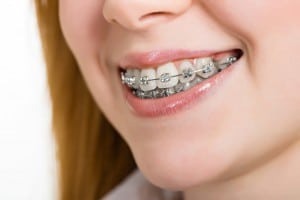There are many different types of overbites, and there are also many ways to fix an overbite. An overbite is a common condition where the top teeth extend over the bottom teeth. This can be due to the spacing and alignment of the teeth or the jaw bone itself. In some cases, the overbite is minor and can be corrected easily, or it may not need correction at all. In other cases, braces or surgery may be needed to fix an overbite.
In this blog post, we’ll discuss how to fix an overbite and what can cause it.
What Causes an Overbite?
The cause of an overbite is not fully understood, and may be determined by many different factors. Genetics are a known factor contributing to overbites, as are some behaviors in early childhood, such as thumb sucking and using a pacifier. All of the following factors can contribute to an overbite:
- Thumb sucking or tongue thrusting
- Abnormally shaped teeth
- Genetics
- Cleft palate
- Skeletal injuries
- (TMJ) Temporomandibular joint dysfunction
- Teeth grinding (bruxism)
- Aging
- Using a bottle or pacifier for long periods in early childhood
What Are the Types of Overbites?
Teeth seldom align perfectly, and most people have some type of teeth or jaw misalignments. How noticeable the condition is will usually determine whether or not it should be corrected. The type of overbite you have will partially determine how to fix the overbite.
Minor overbite: Your top teeth are supposed to overlap your bottom teeth slightly. If the overlap is less than a proportion of 30%, it is probably not a concern.
- Overbite: An overbite occurs when the top teeth overlap the bottom teeth by a proportion of 30-50%.
- Severe overbite: In the case of a severe overbite, the top teeth may completely cover the bottom teeth.
- Overjet: An overbite and an overjet can be easily confused. While an overbite occurs when the top teeth vertically overlap the bottom teeth, usually covering them from view. An overjet occurs when the top teeth horizontally overlap the bottom teeth, which would be viewable from the side. An overjet and an overbite often occur at the same time.
- Cross-bite: While and overbite and overjet are concerned with the vertical or forward position of the teeth, a cross-bite occurs when the teeth are misaligned from side to side.
- Underbite: An underbite, as the name implies, is the opposite of an overbite, and occurs when the bottom teeth vertically cover the top teeth.
- Underjet: An underjet is similar to an overjet, except the bottom teeth are farther forward than the top teeth.
Can an Overbite Cause Health Problems?
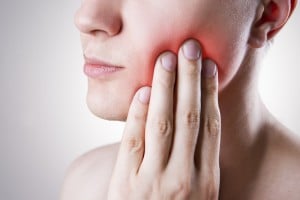
- Tooth decay and cavities from difficult brushing
- Pain in the jaw
- Difficulty chewing
- Trouble speaking or difficulty with pronunciation
- Sleep apnea
- Headaches
- Jaw pain
- Changes to appearance, such as a smaller chin
How to Fix an Overbite
There are several different ways to fix an overbite. The best way to fix an overbite will depend on the severity of the condition and whether it is skeletal or dental. Your dentist or orthodontist can recommend the best overbite treatment based on your x-rays and exam. The time it takes to fix an overbite may be anywhere between six months to two years.
Braces
Braces are often used to straighten teeth, but they can also be used to correct an overbite in some cases. Braces use metal brackets and wires to realign teeth over a period of six to eighteen months. Once teeth are in alignment, rubber bands, coils and springs can be used to correct an overbite.
Braces can be an effective method for correcting an overbite, but this process takes time. While wearing braces, it is more difficult to brush and floss, so patients have to take extra care. Some patients also report pain and discomfort while wearing braces, though this can usually be resolved with over-the-counter pain medicine.
Invisalign
Invisalign works to straighten teeth in a similar way to braces except, instead of using metal wires and brackets, Invisalign uses a series of clear trays. The trays are fitted to the patient’s teeth, and the shape of the mold slowly changes the position of the teeth. The patient changes to different trays as time goes on, with each moving the teeth a bit more. Invisalign can be used to straighten teeth and correct an overbite in many cases. An overbite can be corrected with Invisalign in about a year of treatment.
As the name implies, Invisalign is made from clear plastic, so it’s not easily visible. This is ideal for patients who don’t want braces to change their appearance, but would still benefit from straighter teeth or overbite correction. Invisalign is also removable, so patients can brush and floss normally with less risk of decay compared to braces. Invisalign is also more expensive, and this can be an issue for some patients.
Surgery
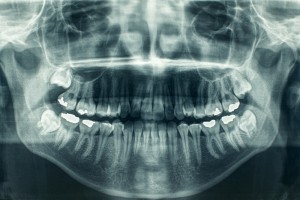
Removing Teeth
In some cases, overbites can be corrected by giving teeth enough space to move in. If the overbite is caused by overcrowded or misaligned teeth, removing one or two teeth can allow the other teeth to move in normally into their correct position. As the teeth move in, the jaw will also align normally.
Myofunctional Device
This is a relatively new method used to straighten teeth and correct minor overbites. Myofunctional devices work on the principle that pressure from the muscles around the mouth, including the jaw muscles, tongue, and cheeks, bring a patient’s teeth and jaw into position. Myofunctional devices are designed to force these muscles into their proper resting position, so the teeth and jaw form normally. Whether or not myofunctional therapy is effective in fixing an overbite requires further research, but this may be an effective option if braces and other ways to fix an overbite are not possible.
Just as there are many types of overbites, there are also many ways to fix an overbite. Which option is best for you will depend on the unique position of your jaw and teeth. Talk to your dentist or orthodontist about ways to fix an overbite and find a system that works for you.

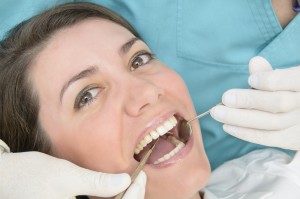
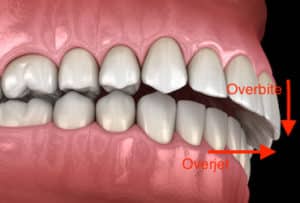 Minor overbite: Your top teeth are supposed to overlap your bottom teeth slightly. If the overlap is less than a proportion of 30%, it is probably not a concern.
Minor overbite: Your top teeth are supposed to overlap your bottom teeth slightly. If the overlap is less than a proportion of 30%, it is probably not a concern.